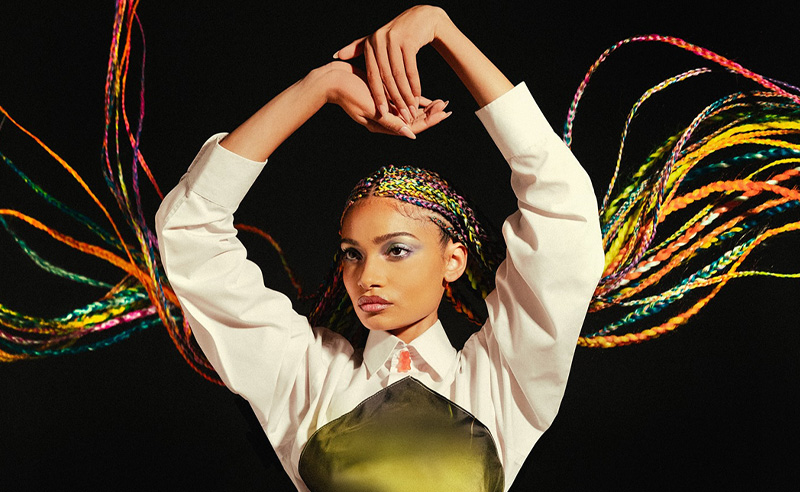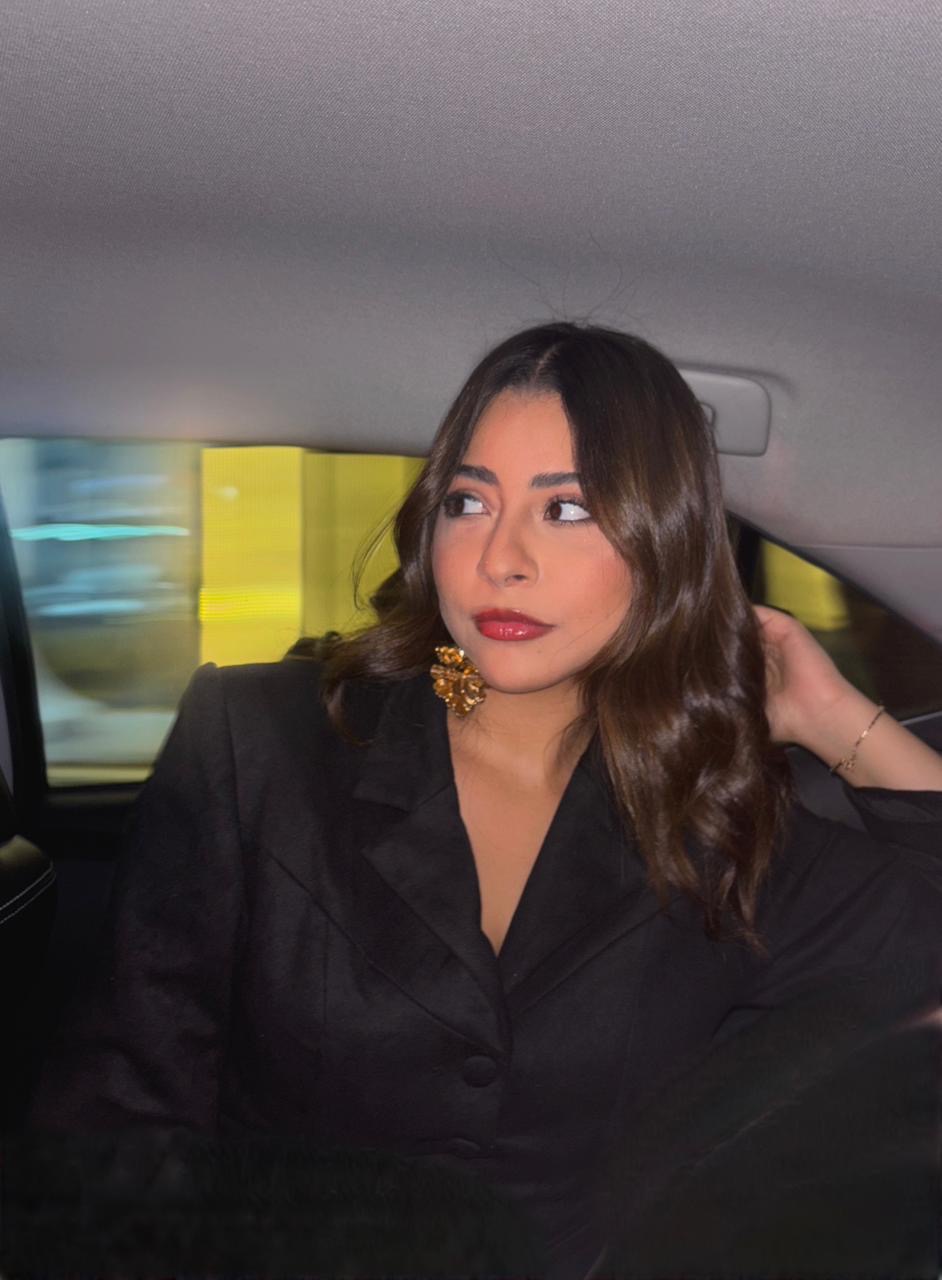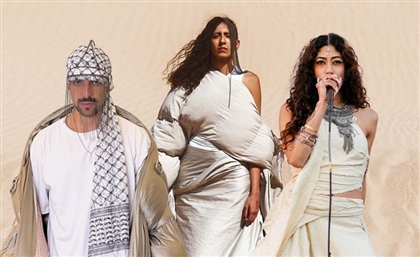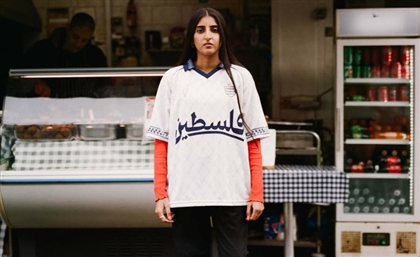Dukkan Avantique Builds a Creative Hangout From Third Culture Heritage
From story-led clothes to a creative hub, UAE-based brand Dukkan Avantique is building a space where third-culture heritage meets art, fashion, and community.

The first thing UAE-based brand Dukkan Avantique launched was a bucket hat. Reversible, with one side bright and colourful, the other plain and minimalistic. Rima Roukh, who designed it with her business partner Sally Batha, says it wasn’t meant as a big statement. But its success showed what they wanted the brand to be: adaptable, with more than one way of wearing.
The idea for the brand came together quickly. Sally Batha calls it “an impulsive decision.” She had always wanted to start something and thought Rima Roukh was the right partner. Roukh had just graduated with a degree in business and finance and didn’t want to work in that field.
“I knew I had everything to gain and nothing to lose,” she says. Two months after deciding to try, they had their first small collection. Batha brought negotiation and contract skills, Roukh brought a strategic overview, and they agreed on the direction.
That direction came from their experience of growing up between cultures. “Our third culture experience influenced everything we did,” Roukh says. The term “third culture” first appeared in the 1950s, when sociologists John and Ruth Useem used it to describe children who spend part of their upbringing in a culture different from their parents’.-476738d3-f860-46e0-870d-7bf20cf35431.jpg) Since then, it’s been used to describe a wider set of experiences, people who don’t belong entirely to one place and whose identities are made up of elements from more than one.
Since then, it’s been used to describe a wider set of experiences, people who don’t belong entirely to one place and whose identities are made up of elements from more than one.
For Dukkan Avantique, this is not a label for marketing but rather how they think about design. Collections start with a story, often from a photograph. Then Roukh distorts, layers, and collages these images until they form a united visual language. “Once it feels right, we translate it into silhouettes that help carry the story, not overpower it. The aim is to have the garment hold the story without locking it into a single meaning.”
This method stems from how cultural memory works: layered, overlapping, and sometimes rearranged. In design history, collage has often been used because it allows multiple sources to sit in the same space without erasing their differences.
The bucket hat set the tone and later pieces kept the balance between wearability and experimentation. On walking this delicate rope between avantegarde and actually wearing the piece to the supermarket or the club, “There’s no formula,” Roukh says. “It’s intuitive. That instinct keeps the art alive.”-071c4c78-58a3-48b9-9b77-386f21570eca.jpg) Many of the silhouettes are oversized and fluid, borrowing from menswear. These gender-neutral choices reflected how they dressed themselves. “We loved to wear and shop in the men’s section,” Roukh says. More gender-specific pieces are to come later.
Many of the silhouettes are oversized and fluid, borrowing from menswear. These gender-neutral choices reflected how they dressed themselves. “We loved to wear and shop in the men’s section,” Roukh says. More gender-specific pieces are to come later.
Palestinian references appear in their work but are used carefully. “We never created a Palestinian piece just because it was trending,” Roukh says. Their first Palestine references made it before October 7, using Handala, olive branches, and the map of Palestine with butterflies. The keffiyeh was part of set design, reimagined in bright colours, and food motifs appeared in prints. “We try to go for subtler reimagined symbols,” she says.
They are also clear about limits. “If success comes at the cost of censorship, it is not success at all,” Roukh says. That stance puts them in line with other small labels that prioritise political and cultural honesty over rapid growth. It means slower expansion, but it also means they retain control over how their work is presented.
Neither came from a technical fashion background. They learned production, sourcing, and pattern-making on the job. “It was so cool to learn,” Roukh says, but the harder part was building a network. “Being third culture also meant networking is scattered,” Batha tells Scenestyled. “The biggest challenge is not having a place to grow a deep network in. But we are creating a community now.”
That idea of community is central to their long-term plan and this is exactly why they created Club Avantique.-d30ccf8b-c401-4905-ae97-7a3f2a9a1849.jpg) Club Avantique is turning the brand from a clothing label into a place where creative work can happen collectively. They picture it as a physical hub with space for designing, making, and sharing ideas, where fashion sits alongside other disciplines like photography, art, and music. “We’d love to see it evolve into a place of co-creators,” Batha says. The aim is to give Dukkan Avantique a living community, not just a customer base, and to create an environment where collaboration and experimentation are part of the daily rhythm.
Club Avantique is turning the brand from a clothing label into a place where creative work can happen collectively. They picture it as a physical hub with space for designing, making, and sharing ideas, where fashion sits alongside other disciplines like photography, art, and music. “We’d love to see it evolve into a place of co-creators,” Batha says. The aim is to give Dukkan Avantique a living community, not just a customer base, and to create an environment where collaboration and experimentation are part of the daily rhythm.
Looking back, they see how little they knew about what it would take to build a brand. “At a young age we were so naive with what it takes,” Roukh says. But that lack of certainty also helped them start. “You have to start and fall in love with the purpose,” they both say.
In a global fashion market, cultural symbols are often flattened so they can be consumed quickly. Dukkan Avantique’s approach, like many slow brands, pushes against that. It’s not necessarily anti-commercial, but it treats the work as more than a product. It’s a record of memory, of shifting belonging, and of the choices made to keep both intact.
Trending This Month
-
Nov 18, 2025
-
Nov 20, 2025
















